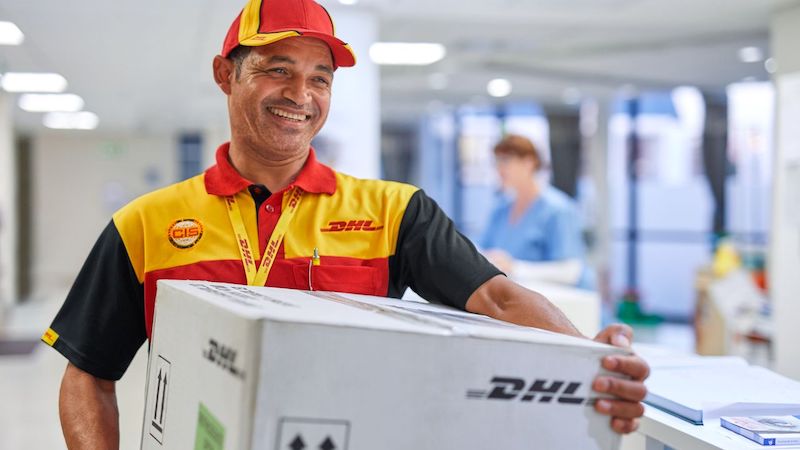Grow your business with the Discover newsletter
Logistics advice & insights straight to your inbox
Subscribe now
Pakistan, particularly Sialkot, is recognised globally as a manufacturer of high-quality surgical instruments. Sialkot alone produces 99% of the country’s production, making it the nerve centre of Pakistan's surgical industry and an important supplier in the global market. These instruments cater to a broad array of medical fields, from diagnostic tools, general surgical instruments, and tools for specialties like neurology, dermatology, and gynaecology to the intricacies of ophthalmology, urology, and cardiovascular surgeries.
Orders and specifications typically come from major medical markets worldwide, especially the United States (US), Germany, the United Kingdom (UK), and China. The US takes the top spot, making up 27% of Pakistan's exports as of 2021, the Small & Medium Enterprises Development Authority reported.
The surgical industry’s stellar reputation and robust export orientation have led to an impressive export value of US$420.9 million. The vast majority of this export value is tied to instruments for medical, surgical, or veterinary sciences, pegged at US$416.8 million.
Operating primarily on a business-to-business model, local manufacturers in Pakistan produce surgical instruments according to the importing country's specifications. The importing entities then brand these equipment and distribute them to their respective markets as suppliers, reinforcing Pakistan’s pivotal role in the global surgical supply chain.
If you’re a surgical instrument manufacturer in Pakistan seeking to tap into global demand, rest assured that you’re on the right path. However, as with any export venture, getting the basics right is essential for a smooth international shipping experience.
Below, we map out all you need to know about shipping surgical instruments from Pakistan to the rest of the world.
Accurate and complete documentation is critical when exporting surgical instruments from Pakistan. Essential documents typically include:
There is also import documentation to prepare to be allowed entry into the destination country. For example, shipments of surgical instruments entering the US must come with proof of approval or clearance from the Food and Drug Administration (FDA). This certifies that the product is safe and effective for its intended use. When importing into the European Union (EU), businesses must comply with the Medical Devices Directive 93/42/EEC and obtain a CE marking for all instruments of surgery. In addition, the Directive also establishes labelling requirements, which include, among others, the trade name and address of the manufacturer or authorised representative in the EU on the label, outer packaging and usage instructions.
Pakistan levies a standard sales tax of 17% on exports, and an extra 1% is added should the customer be a non-Sales Tax registered consumer. Duties and taxes will differ based on the destination country. Most surgical instruments fall under the HS code 9018, and countries will apply their duties and taxes accordingly. For example, in the US, the general duty for surgical instruments following the Harmonised Tariff System (HTS) codes of the HS code 9018 is 0%.
Pakistan’s free trade agreements (FTAs) with countries also entail reduced tariffs for businesses. For instance, the tariffs on surgical instruments entering China are from 4-8%, instead of the standard 13%, according to the revised tariff schedule of the China-Pakistan FTA.

Correctly packaging surgical instruments is critical in ensuring their safety and integrity during transit. Below is a step-by-step guide to help you understand how to package these sensitive items effectively for export:
Step 1: Cleaning and sterilisation
Before packaging, it's crucial that all surgical instruments are thoroughly cleaned and sterilised. This prevents any contamination and ensures they are safe for surgery use.
Step 2: Wrapping
Each surgical instrument should be individually wrapped in sterilised plastic pouches or packages. This provides the first layer of protection and maintains the sterile state of the instruments.
Step 3: Inner packaging
The individually wrapped instruments should then be placed inside a sturdy inner box or container. If necessary, use bubble wrap or foam inserts to prevent movement and contact between instruments. This is particularly important for delicate or sharp instruments, which could be damaged or cause damage during transit.
Step 4: Outer packaging
The inner box should then be placed inside a robust outer box, with additional padding material like packing peanuts or air pillows to fill any void space. This further secures the items, protecting them against any external shocks or pressure during shipping.
Step 5: Sealing
Ensure the outer box is securely sealed with strong packaging tape. For tamper-evident security, consider using a tape that leaves a mark when removed. This ensures the integrity of the items.
Step 6: Labelling
Accurately label the package, ensuring all details like the recipient's address, the shipper's address, and any handling instructions are clearly visible. Don't forget to indicate that the box contains medical devices, which may need special handling during transit.
Step 7: Documentation
Affix the shipping label (air waybill) and any customs or special handling documents in a document pouch on the exterior of the package.
By following these steps, you can ensure that your surgical instruments reach their destination in optimal condition. You should also consider how you can make your packaging stand out in the market you’re targeting by ensuring that it’s more effective, reliable and safe than your competitors.
For additional peace of mind, partnering with a reliable international shipping provider like DHL Express Pakistan can offer specialised handling for medical devices and surgical instruments. Our team goes beyond standard international shipping, standing as a trusted partner with a deep understanding of the complexities involved in shipping these delicate, high-value items. With our experience, extensive global network, and commitment to delivering high-quality services, we can facilitate seamless, efficient, and timely delivery of surgical instruments to emerging global markets. Whether you're shipping to the US, Germany, UK, China, or beyond, we’ll ensure your products arrive safely and securely, helping your business thrive in the international arena.
Create a DHL Express business account and enjoy international priority shipping today.